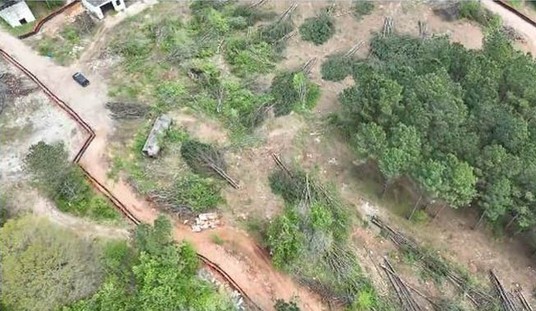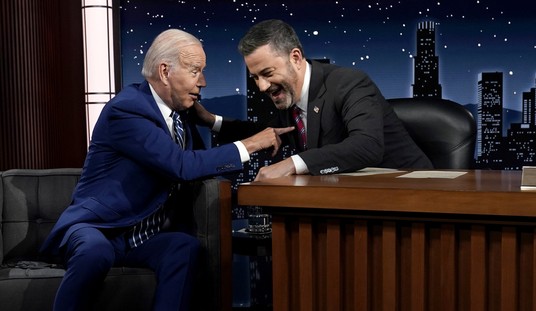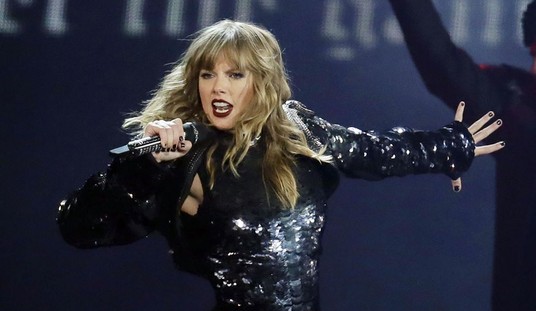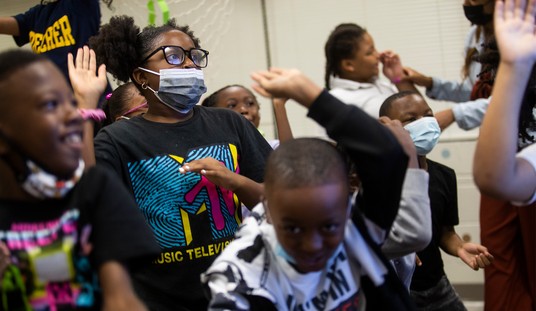… then perhaps you shouldn’t comment on immigration. Apparently, many people — including journalists and commentators — lost their minds last night when Donald Trump used a common term for human smugglers on the southern border. Welker asked a tough but fair question about the outcome of Trump’s zero-tolerance border enforcement policy on hundreds of children. As Trump explained, smugglers often use children as cover for their operations.
He uses the term “coyotes,” which confused a great many people who haven’t paid attention to this issue:
https://www.youtube.com/watch?v=q1952AODLJ0
Welker: We’re going to talk about immigration. We’re going to talk about immigration, now, gentlemen, and we’re going to talk about families within this context. Mr. President, your administration separated children from their parents at the border, at least 4000 kids, You’ve since reversed your zero tolerance policy, but the United States can’t locate the parents of more than 500 children. So how will these families ever be reunited?
Trump: Children are brought here by coyotes and lots of bad people, cartels, and they’re brought here and it’s easy to use them to get into our country. We now have a stronger border as we’ve ever had. We’re over 400 miles of brand new wall, you see the numbers, and we let people in, but they have to come in legally.
Welker: But how will you reunite these kids with their families?
58:48 Trump: Let me just say. They built cages. You know, they used to say I built the cages. And then they had a picture in the newspaper. There was a picture of these horrible cages and they said, ‘Look at these cages, President Trump built them.’ And then it was determined they were built in 2014. That was him.
Welker: Do you have a plan to reunite the kids?
59:08 Trump: Yes, we’re working on a very — we’re trying very hard. But a lot of these kids come up without the parents, they come over through cartels and the coyotes and through gangs.
There is literally nothing unusual about the term “coyotes,” although Vox had to write an explainer about it two years ago for its audience. Even so, it looks like a number of people missed that edition of Vox, including people who get paid to analyze public issues or advocate on them:
https://twitter.com/BecketAdams/status/1319511968252891137?ref_src=twsrc%5Etfw%7Ctwcamp%5Etweetembed%7Ctwterm%5E1319511968252891137%7Ctwgr%5Eshare_2%2Ccontainerclick_1&ref_url=https%3A%2F%2Fthefederalist.com%2F2020%2F10%2F23%2Fif-you-dont-know-that-coyotes-are-human-smugglers-shut-up-about-the-border%2F
As well as, er … at least one elected official:
Chief Deputy Whip of Georgia House Democrats. https://t.co/ph3cBc6Nkz
— Larry O'Connor (@LarryOConnor) October 23, 2020
Other news outlets, like Uproxx, International Business Times, and other blue-checks on Twitter reported on the “shocked reactions” on social media over the use of the term “coyotes” for human smugglers. IBT treats it as a Trump-coined term:
“Coyote” is a term for human smugglers along the U.S.-Mexico border, though the term is rarely used.
Trump would later twice repeat the coyote comment.
Trump had made the comment about coyotes before.
“A nation without borders is not a nation at all,” Trump said in 2018. “Without borders, we have the reign of chaos, crime, and — believe it or not — coyotes.”
It’s not a rarely-used term at all, nor is it unique to Trump. The slang term has been in use for years, if not decades, to describe the industrial-level human smuggling at the border. We have references to coyotes in the smuggling context going all the way back to 2006, almost at the launch of Hot Air. Jim Geraghty points out this morning that the media has used this term for decades before that, and that the term is common use among people involved in border issues:
It is not a new term, or one that is exclusively used locally. A New York Times article from May 21, 1973, declared, “In return for his half of the bribe money, the immigration officer allowed the investigator to use his two best coyotes—a Spanish term applied to Mexicans hired to find countrymen willing to pay to get the United States.” In the New York Times archives, 360 articles have used the term “coyote” and “immigration.”
Anyone who followed this issue with any sort of diligence at all would not have thought the reference strange at all. Neither Welker nor Joe Biden objected to the term, in fact, showing how common it is. Biden did push back on the idea that coyotes smuggled these specific children into the country:
These 500 plus kids came with parents. They separated them at the border to make it a disincentive to come to begin with. Big real tough, really strong. And guess what? They cannot — it’s not coyotes that bring them over, their parents were with them. They got separated from their parents.
It’s not entirely clear who brought these particular 500-plus kids into the country, though. Adults have used unrelated or more distantly related children as a cover to get released after capture inside the US, which was policy before and after Trump’s zero-tolerance approach. That is what’s complicating the reunification efforts now, as John Daniel Davidson notes at The Federalist:
The report claims that “the parents of 545 children still can’t be found,” but that’s not quite right. The NPR report omitted a statement issued by Department of Homeland Security spokesperson Chase Jennings explaining that in fact the vast majority of these parents have been found but have refused reunification with their children, which is why the children are still in DHS custody.
“In the current litigation, for example, out of the parents of 485 children whom Plaintiffs’ counsel has been able to contact, they’ve yet to identify a single family that wants their child reunited with them in their country of origin,” Jennings said.
Why would these parents refuse to be reunited with their children? Because their children are in the United States, and they are in their country of origin, most likely Guatemala, Honduras, or El Salvador. They don’t want their children to go back there, they want them in the United States. Many of these parents paid exorbitant amounts of money to get their children smuggled into the U.S., sometimes with adults posing as parents, sometimes unaccompanied and with a larger group of migrants. The whole point was to get their kids into the U.S. by any means necessary, even if it meant being separated.
Indeed, that’s often how “unaccompanied minors” show up on the border; their parents pay smugglers, called “coyotes,” to bring them across illegally, between the legal ports of entry, as part of an agreement with the cartel that controls a particular stretch of the border.
It’s a good explanation, but it’s likely lost on those who think Trump was referring to literal coyotes in this answer, or comparing the parents to dogs. The problem of “coyotes” in human trafficking is such a basic point in border security that ignorance of the term is basically a disqualifier from the debate.








Join the conversation as a VIP Member